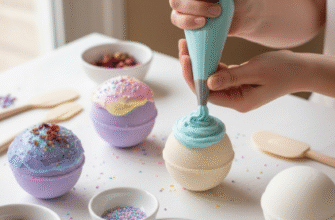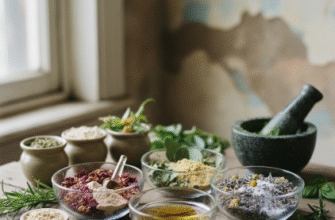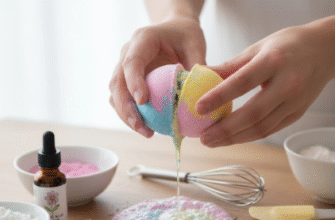The allure of crafting your own skincare products is undeniable. Scrolling through social media feeds often reveals aesthetically pleasing images of homemade masks, serums, and scrubs, promising natural ingredients and personalized results. The DIY approach seems empowering, potentially cost-effective, and a way to know exactly what you’re putting on your skin. However, the internet is a vast and unregulated space, and when it comes to skincare, misinformation can range from ineffective to downright harmful. Finding trustworthy guidance amidst the noise is crucial before you start mixing ingredients in your kitchen.
Many embark on their DIY skincare journey inspired by visually appealing tutorials on platforms like Instagram, TikTok, or Pinterest. While these can be great for initial inspiration, they often lack depth, context, and crucial safety information. A short video rarely explains the chemistry involved, potential irritants, proper preservation (or lack thereof), or why a particular ingredient might work for the creator but cause a reaction for someone else. Relying solely on fleeting trends or viral hacks is a risky strategy.
The Pitfalls of Unverified Sources
Navigating the online world of DIY skincare requires a healthy dose of skepticism. Many sources, unfortunately, are not created with rigorous accuracy or safety in mind. Understanding the common types of unreliable information can help you steer clear.
Casual Blogs and Personal Anecdotes
Countless blogs feature personal skincare recipes. While the author might have good intentions, their experience is anecdotal. What works wonders for their skin type and environment might be unsuitable or even irritating for yours. Many bloggers lack formal training in cosmetic science or dermatology. Their advice is often based purely on personal trial and error, which doesn’t translate into universally safe or effective guidance. Furthermore, some blogs might subtly (or not so subtly) promote specific ingredients or brands they are affiliated with, clouding the objectivity of their recommendations.
Social Media Trends and Influencers
Platforms driven by short-form video content are notorious for spreading skincare myths and potentially dangerous DIY trends rapidly. Challenges encouraging the use of harsh ingredients like undiluted lemon juice or baking soda on the face can compromise the skin barrier and lead to significant irritation or chemical burns. Influencers, even those with large followings, may not have the expertise to vet the safety or efficacy of the “hacks” they promote. Remember, popularity does not equal credibility.
Unmoderated Forums and Groups
Online forums can be a place to connect with fellow hobbyists, but they vary wildly in quality. Unmoderated or poorly moderated groups can become echo chambers where misinformation spreads unchecked. Advice might be shared without any scientific basis, and dangerous practices can sometimes be normalized. It’s difficult to ascertain the qualifications or experience level of users offering guidance.
Spotting Red Flags in DIY Skincare Information
Developing a critical eye is your best defense. Learn to recognize the warning signs of unreliable sources:
- Miracle Claims: Be wary of sources promising dramatic, overnight results or claiming to cure complex skin conditions with simple kitchen ingredients. Real skincare progress takes time and consistent, safe practices. Phrases like “erases wrinkles instantly” or “miracle acne cure” are major red flags.
- Lack of Credentials: Check the “About” section or author bio. Does the person providing advice have any background in cosmetic chemistry, dermatology, esthetics, or a related scientific field? If the source is anonymous or lacks any verifiable expertise, approach their advice with extreme caution.
- Ignoring Risks: Reputable sources will always mention potential side effects, contraindications, or the importance of patch testing. Sources that only highlight benefits and gloss over potential risks are not providing a complete or safe picture.
- Emphasis on Sales Over Safety: If a website or influencer seems more focused on selling you specific ingredients, kits, or affiliated products than on explaining the science and safety protocols, their primary motivation might be profit, not education.
- Outdated Information: Cosmetic science evolves. Ensure the information you’re referencing is relatively current. Practices or ingredient recommendations from many years ago might now be considered unsafe or ineffective based on newer research.
- Lack of Scientific Reasoning: Does the source explain *why* an ingredient works or *how* a recipe should be formulated based on scientific principles (even simplified ones)? Or does it just present recipes without context? Trustworthy sources often provide at least a basic rationale.
Finding More Reliable Avenues for Information
So, where can you turn for more dependable information if you’re interested in the *principles* behind skincare and simple DIY preparations? The focus should be on understanding ingredients and basic safety, rather than seeking complex formulation advice from unqualified sources.
Understanding Cosmetic Ingredients
Instead of looking for recipes first, start by learning about individual ingredients. Several online databases are dedicated to explaining the function and safety profile of common cosmetic ingredients based on scientific literature. Resources like:
- INCI Decoder: Helps break down the ingredient lists (INCI names) on commercial products, explaining the purpose of each component.
- Paula’s Choice Ingredient Dictionary: Offers summaries of research on thousands of skincare ingredients, rating their effectiveness and potential for irritation.
Using these tools helps you understand what ingredients do, whether they are generally considered safe for cosmetic use, and potential concerns. This knowledge is fundamental before even considering simple DIY mixing.
Resources from Cosmetic Science Professionals
Look for blogs, websites, or publications run by qualified cosmetic chemists or scientists. These professionals often share insights into how skincare products are formulated, the science behind ingredient functions, and general best practices for cosmetic safety. They typically focus on explaining the *why* and *how*, rather than just sharing random recipes. Search for authors who clearly state their credentials and reference scientific studies or established formulation principles. Be mindful that even experts might have biases, but their foundation in science provides a more reliable starting point.
Important Considerations for DIY Projects: Remember that creating simple preparations like an oatmeal mask with water is vastly different from attempting to formulate complex products like lotions or serums. Emulsions require specific techniques, and any water-containing DIY product needs proper preservation to prevent harmful microbial growth. Relying on blog posts for preservative advice or complex formulations is highly risky and generally discouraged without significant study and understanding of cosmetic microbiology and chemistry. Always prioritize safety over experimentation when ingredients or processes are unfamiliar.
Books on Cosmetic Science for Beginners
Consider seeking out introductory books on cosmetic science or formulation written for hobbyists or laypeople by authors with verifiable credentials. These can provide a more structured and comprehensive understanding of ingredient types, basic formulation techniques (like oil infusions or simple mixtures), and crucial safety considerations, including hygiene and preservation basics. Look for well-reviewed books that emphasize safety and realistic expectations.
Moderated Hobbyist Communities
Certain online communities, like specific subreddits (e.g., r/DIYBeauty – use caution and verify information) or dedicated forums, are geared towards cosmetic formulation as a serious hobby. These often have stricter moderation, experienced members who understand basic chemistry and safety, and established rules emphasizing safe practices. Even in these more structured environments, however, it’s essential to cross-reference information and not blindly trust advice. Look for discussions that cite sources or explain the reasoning behind suggestions.
The Non-Negotiable Step: Patch Testing
Regardless of how reliable your source seems, patch testing is essential. Everyone’s skin is different, and you can react even to ingredients generally considered safe or that you’ve used before in commercial products (formulations differ!). Before applying any new ingredient or simple DIY mixture to a large area:
- Apply a small amount of the ingredient or mixture to an inconspicuous area of skin, like the inner wrist or behind the ear.
- Leave it on for the intended duration (or at least 24 hours if it’s a leave-on product).
- Monitor the area for any signs of redness, itching, burning, or irritation for up to 72 hours (reactions can sometimes be delayed).
- If any reaction occurs, do not use the ingredient or mixture.
Patch testing doesn’t guarantee you won’t have a reaction later, but it significantly reduces the risk of a widespread adverse response.
Concluding Thoughts on Safe Exploration
Exploring the world of DIY skincare can be a rewarding hobby, allowing for creativity and a deeper connection with the products you use. However, safety and informed choices must always come first. The internet offers a wealth of information, but discernment is key. Prioritize sources that emphasize scientific understanding, transparency about credentials, and potential risks. Be critical of sensational claims and trends. Start simple, focus on understanding ingredients, always patch test, and never attempt complex formulations involving preservatives or potentially irritating substances without a thorough understanding grounded in reliable cosmetic science resources. By being a cautious and informed explorer, you can navigate the world of DIY skincare information more safely.








